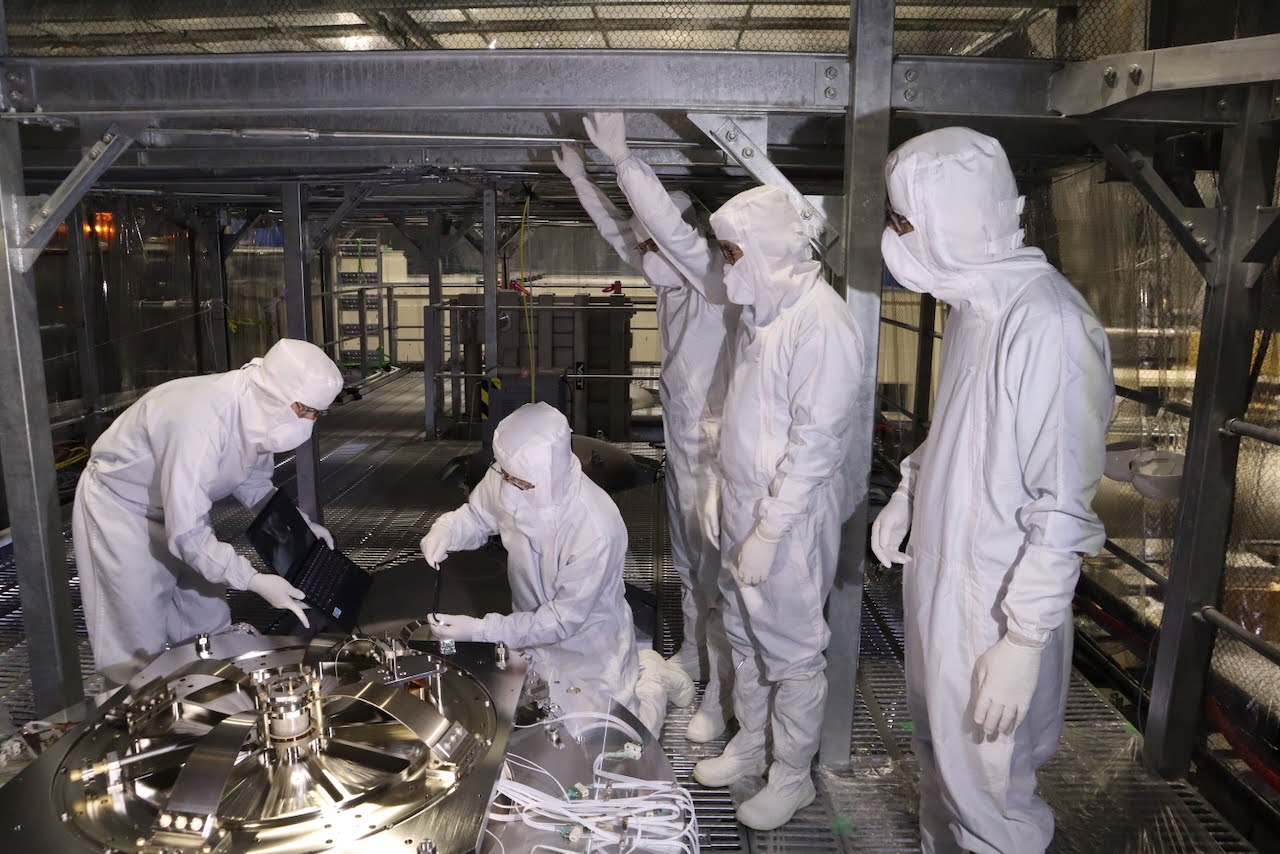Disclaimer: machine translated by DeepL which may contain errors.
The Rigakubu News
The Rigakubu News Nov. 2025
Advancing Science >
~ Message from a graduate student~.
New windows on the universe and physics opened by high-frequency gravitational waves
 |
|
Munetaka Otsuka |
| Department of Astronomy (GR) Doctoral Student |
| Place of birth Tokyo, Japan |
| Department of Astronomy, Faculty of Science and Department of Electronic Engineering, Faculty of Engineering, The University of Tokyo |
My research focuses on detecting “higher-frequency” gravitational waves with the KAGRA gravitational-wave telescope, in order to explore previously unknown regimes of astronomy and physics.
Gravitational waves were directly detected for the first time in 2015, and since then more than one hundred merger events involving black holes and neutron stars have been observed. Currently, the second-generation gravitational-wave detectors—LIGO in the United States, Virgo in Europe, and KAGRA in Japan—are conducting joint international observations. These detectors have their highest sensitivity mainly around the 100-Hz band. However, if sensitivity can be extended up to the 1-kHz band, we could directly observe the “oscillations” of neutron stars formed after the merger. This would provide clues to the properties of neutron stars (their equation of state) and even to unknown aspects of particle physics. Such information—such as indications of the possible existence of yet-undetected quark stars—cannot be obtained by any other method, including even the largest particle accelerator experiments; it is unique to gravitational-wave observations.
When gravitational waves pass through, the distance between objects stretches and shrinks slightly—an extraordinarily tiny distortion equivalent to the Earth–Sun distance changing by the width of a single atom. This minute effect is measured using laser interferometry. To avoid being overwhelmed by vibrations, the mirrors of the detector are suspended by multi-stage vibration isolation systems. At KAGRA, the mirrors are cooled to cryogenic temperatures to reduce thermal vibrations (thermal noise), adopting in advance the same approach planned for future third-generation detectors. Each mirror at the final suspension stage is hung by four sapphire fibers, and reducing the thermal noise of these fibers is not only an urgent issue for improving current sensitivity, but also crucial for extending high-frequency sensitivity in the future. I am therefore working on techniques to reduce fiber thermal noise.
One of the approaches is laser-based fusion splicing. This project has been selected for the Graduate School of Science Research Abroad Program (GRASP2025). I am currently staying at the University of Glasgow (September–November 2025) to conduct experiments and evaluations on laser fusion bonding of sapphire.
After completing a master’s degree in electronic engineering at the University of Tokyo, I initially worked as an engineer at a telecommunications company. However, my longstanding fascination with astronomy grew stronger, prompting me to make the bold decision to resign and re-enter the University of Tokyo as an undergraduate in astronomy. There I encountered gravitational-wave research, and I have since continued in this field through my master’s and doctoral studies. Unlike the corporate world, academic science offers a remarkably flat and open environment, where I have been fortunate to receive warm and specialized guidance from experts across universities, countries, and institutions. Having experienced professional work before returning as a student, I have come to appreciate anew both the unique position students occupy and the importance of taking initiative, just as in industry. I am also grateful for the unexpectedly extensive support systems available to students—including the aforementioned international program—which allow me to focus deeply on my research.
Encouraged by my family, who told me, “If you’re aiming for the Nobel Prize, it’s worth quitting your job,” I returned to student life with the hope of living up to their expectations and contributing, even in a small way, to the advancement of science. By uncovering secrets of the Universe from the “high-frequency” realm of gravitational waves and venturing toward physics that no one has yet seen, I hope readers will share in the excitement of this research, where cutting-edge theory and precision engineering meet.

Work being conducted at the KAGRA gravitational-wave telescope.
KAGRA is a gravitational-wave observatory built deep in the mountains of Kamioka, Gifu Prefecture. The project was launched in 2010, followed by construction, and it began international joint observations in 2020.


